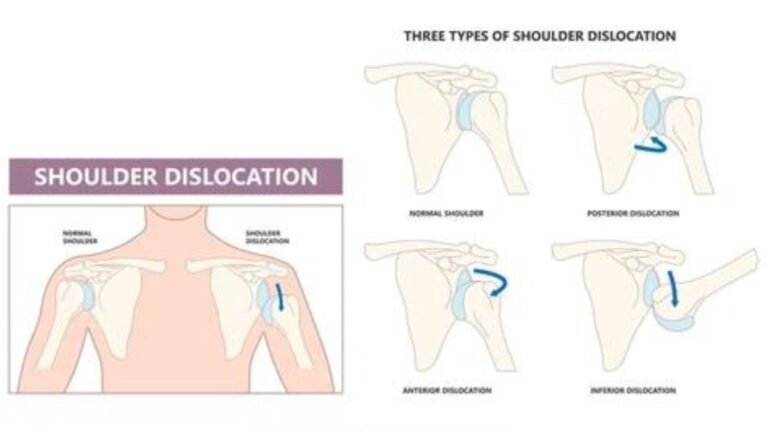Understanding Shoulder Dislocations
The shoulder joint, known for its complexity and flexibility, is prone to dislocations. Dislocations happen when the upper arm bone comes out of the shoulder joint. This type of injury is frequently seen in athletes, particularly those engaged in contact sports, and can also occur due to falls or accidents. Getting advice from a shoulder doctor in Tulsa can offer a further understanding of the unique dangers and preventive strategies suited to your actions. Knowing how to avoid shoulder dislocations is essential for preserving shoulder wellness and overall health. Because of its wide range of movement, the shoulder joint is naturally less stable than other joints. Maintaining stability depends significantly on the nearby muscles, tendons, and ligaments. This level of complexity indicates that even slight injuries or uncomfortable movements can result in dislocation. You can prevent this painful and sometimes disabling condition by caring for your shoulders proactively, allowing you to continue your active lifestyle uninterrupted.
Common Causes of Shoulder Dislocations
Some various activities and situations can lead to shoulder dislocations. Contact sports like football and hockey involve frequent physical collisions, which can force the shoulder joint out of place. High-impact activities such as gymnastics and skiing also pose a significant risk due to the potential for falls and sudden impacts. Even day-to-day mishaps like slipping on ice or an awkward fall can cause this painful injury. Understanding these causes is the first step toward prevention. By being aware of the risks associated with various activities, you can adopt preventive measures to safeguard your shoulders.
Strengthening Your Shoulders
Developing stronger shoulder muscles is one of the best strategies to avoid shoulder dislocations. Robust muscles enhance stability and support for the shoulder joint, lowering the possibility of dislocations. Exercises that work the surrounding muscles and rotator cuff can significantly improve shoulder stability. A few helpful exercises include shoulder presses, lateral lifts, and rotator cuff strengthening exercises. Regular performance of these exercises is recommended to preserve muscular strength and flexibility. Furthermore, using good form when working out is essential to preventing injuries and getting the most out of your training regimen.
Protective Gear: A Must-Have
Protective gear can be a game-changer when engaging in sports or high-risk activities. Shoulder pads, braces, and supports can provide additional stability and protection, reducing the likelihood of dislocations. For instance, football players wear shoulder pads that absorb impact and distribute the force evenly, minimizing the chances of a dislocation. Similarly, braces or supports can help stabilize the shoulder during repetitive movements or heavy lifting activities. Choosing gear that fits well and does not restrict movement is crucial. Properly fitting gear ensures maximum protection while allowing you to perform at your best.
Effective Home Remedies for Minor Dislocations
Several home remedies can aid in recovery for minor shoulder dislocations. Rest is paramount to prevent further injury. Avoiding activities that stress the shoulder allows the joint to heal properly. Ice packs can reduce swelling and alleviate pain by numbing the affected area and constricting blood vessels. Over-the-counter anti-inflammatory medications can also help manage discomfort by reducing inflammation. Always follow these tips with proper medical advice to avoid complications. Consulting a healthcare professional ensures you receive appropriate care and avoid aggravating the injury.
Rehabilitation Practices
Rehabilitating after an accident is essential to healing and avoiding further dislocations. Physical therapy that emphasizes strengthening exercises and flexibility training can restore the shoulder’s functioning. Reputable rehabilitation programs can help patients heal quickly and lower their chance of suffering new ailments. A customized program is usually used throughout rehabilitation to progressively regain the shoulder joint’s strength and range of motion. By participating in these programs regularly, you may significantly enhance your chances of recovering and resuming your regular activities after your shoulder fully recovers.
Real-Life Example: A Tale of Recovery
Think about John, a passionate football player who dislocated his shoulder after a match. John decided to pursue a complete rehabilitation strategy to address the difficulties posed by an excruciating injury and the possibility of future dislocations. John could return to his sport with more strength because of physical treatment, strengthening exercises, and wearing the appropriate shoulder equipment. His experience serves as a reminder of the value of a comprehensive strategy for shoulder health. John’s experience demonstrates how successful it is to overcome shoulder dislocations and pursue one’s passion by combining expert advice, committed rehabilitation, and preventive measures.
Conclusion
Shoulder dislocations may be avoided with a multifaceted strategy that includes strengthening workouts, appropriate equipment, and efficient rehabilitation techniques. These suggestions prevent shoulder dislocations and their associated pain and discomfort. By being proactive, you can safeguard your shoulders and ensure that injuries won’t prevent you from engaging in your favorite hobbies. Whether you lead an active lifestyle or are an athlete, taking the time and making an effort to maintain your shoulder health will pay you in the long run.
